People tell us stories all the time about how they thought they were raising hens, but some of their birds ended up being roosters.
When roosters mature, they can become a major issue in residential areas. Some places even have laws restricting roosters.
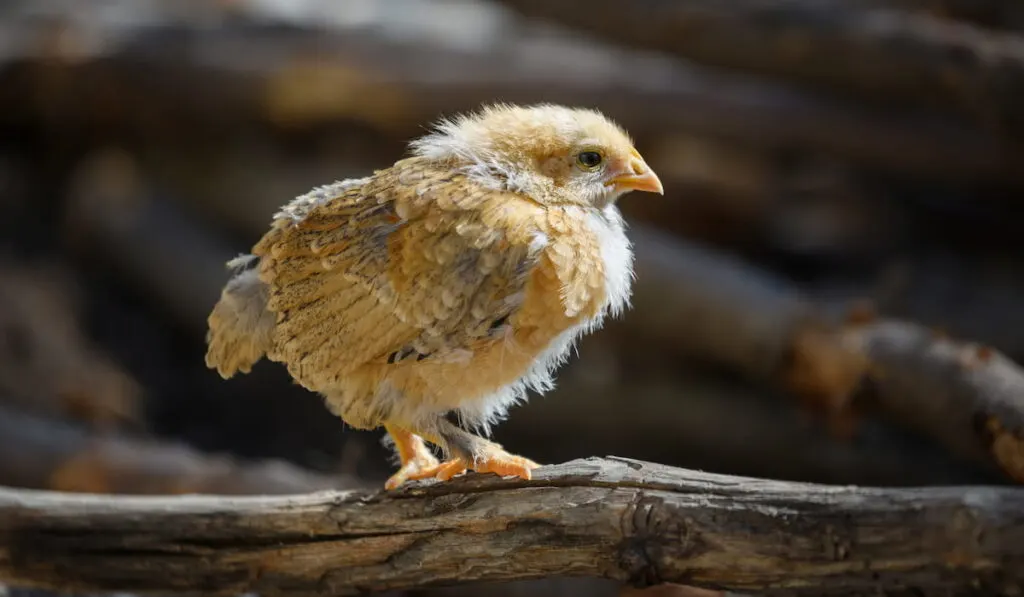
How can you tell if your bird is a rooster or a hen?
There are obvious signs like the comb on top of a rooster’s head and the shape and color of their feathers, but those features often take longer to develop.
There are other ways to spot roosters early when raising chicks, so you don’t run into trouble with friends and neighbors.
Here’s some information on how to tell roosters from hens at different stages of life and how it can help you raise your birds in the best possible way.
Table of Contents
Check Chick Vents to Determine Sex
You have a good chance of telling a rooster from a hen from the day they’re born.
A vent is a hole that your chick defecates out of and where hens lay their eggs. When they hatch, you can find it just under the tuft of fluff on their backsides.
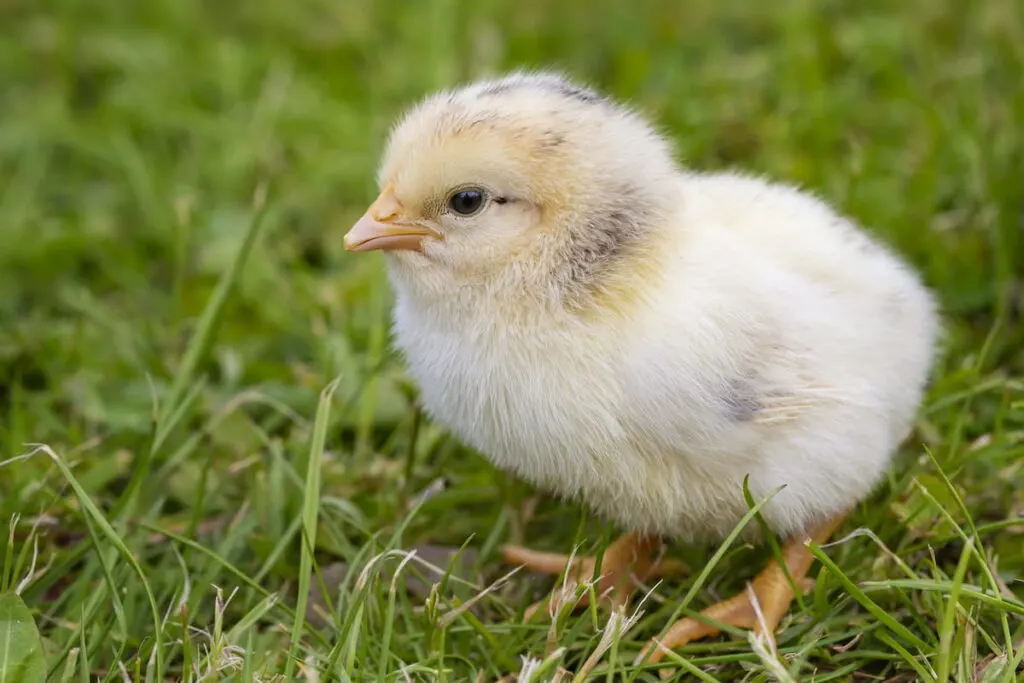
With very high accuracy, checking the vent can help you tell whether a chick is a hen or a rooster.
Male vents will have a small bump that indicates the formation of male genitalia. If there’s no bump, your chick is likely a hen.
However, some chicken breeds don’t develop the bump for a few weeks, so the results on the first day could be mixed.
Additionally, it gets harder to see the bump as the intestines grow, so it’s best done early. It will likely take some time before you can see the bump consistently and know what it looks like.
Checking Their Wings
When chicks are small, you can also look at their wings to tell if they are a rooster or a hen.
Typically, male and female chicks grow their feathers at different speeds.
Female chickens grow their wing feathers faster than males.
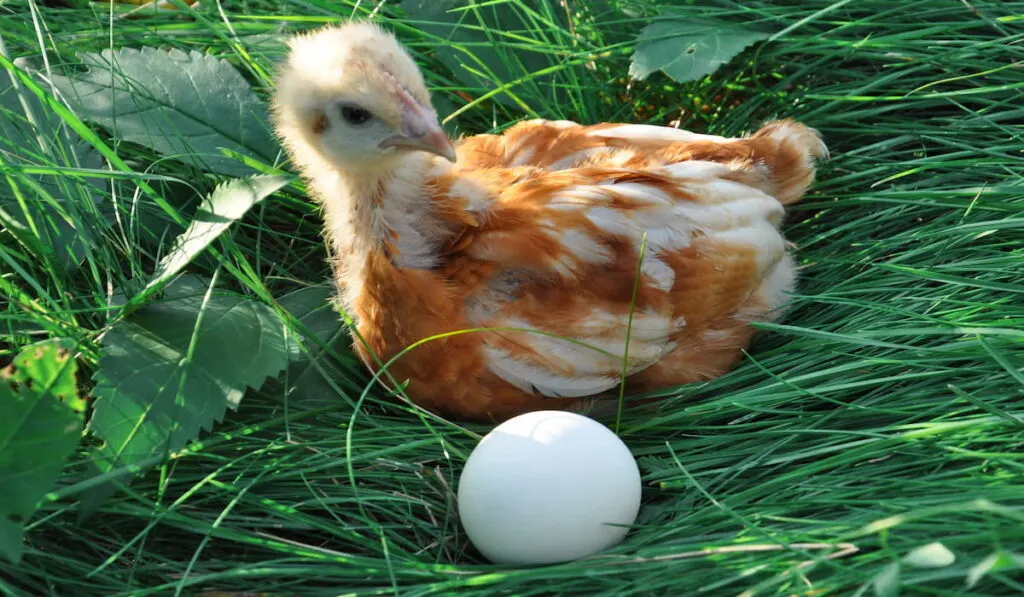
If you look at a chick and it has wing feathers growing in at just a few days old, then it’s likely a hen or pullet.
Some female chicks even grow their feathers when they’re still inside the egg.
Of course, the longer you wait to check the feathers, the less accurate the test is. Ideally, you’ll check the feathers in the first two days of life before they start to grow faster on cockerels.
Comb and Wattles
The comb is the red spiky thing that grows on top of chickens’ heads. The wattle is what grows underneath the beak, right around where a chicken’s chin would go.
Both hens and roosters have combs and wattles, but they differ slightly in ways that will help you tell the difference between the sexes.
Usually, roosters have much more prominent combs and wattles. Their combs stand up straighter, feel waxy, and are much brighter than hens of the same breed.
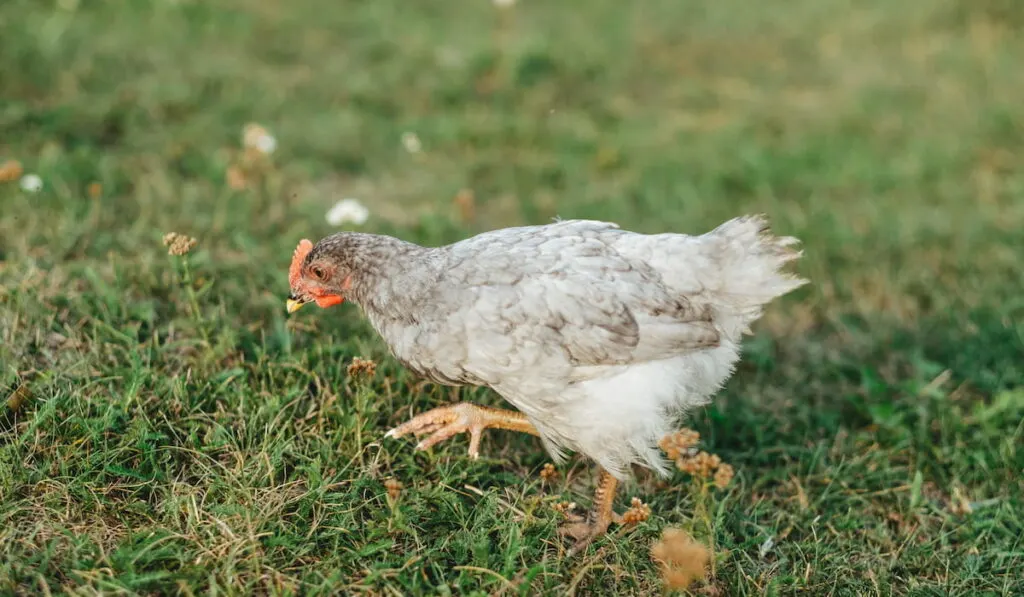
Hens choose rooster mating companions based, in part, on the size and color of their combs. The larger the comb, the more dominant the rooster.
Using Feet to Tell the Difference Between Hens and Roosters
Looking at feet is another easy tell once a chicken is fully grown. Rooster feet and legs are much stronger, bigger, and more defined than hens.
They look almost like something out of a Jurassic Park Movie. You could easily switch a rooster’s leg for a dinosaur’s and not tell the difference.
Hens, on the other hand, have smaller legs and feet. In addition, they are usually paler and weaker, so their claws grow in odd directions.
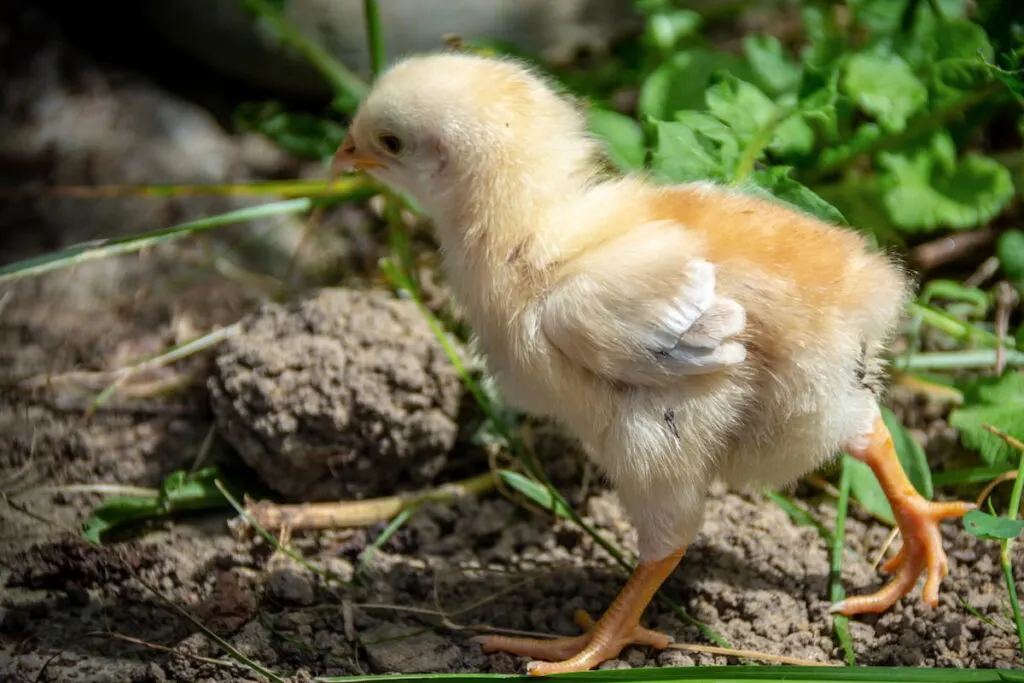
Roosters are more stable walkers and will make more pronounced steps as they move around.
In addition, their spurs are longer and more prominent and designed to defend themselves and their hens from potential predators or compete with other roosters.
The Tail Is a Fantastic Tell!
One of the easiest ways to tell a rooster from a hen is to look at its tail.
When mature, roosters have tails that extend way up and out, curling down toward the ground. In addition, their tail feathers are much longer and wider than hen tail feathers.
In comparison, hen tail feathers almost look stubby. This is because they are shorter and meet at a point that is extended not too far from their bodies.
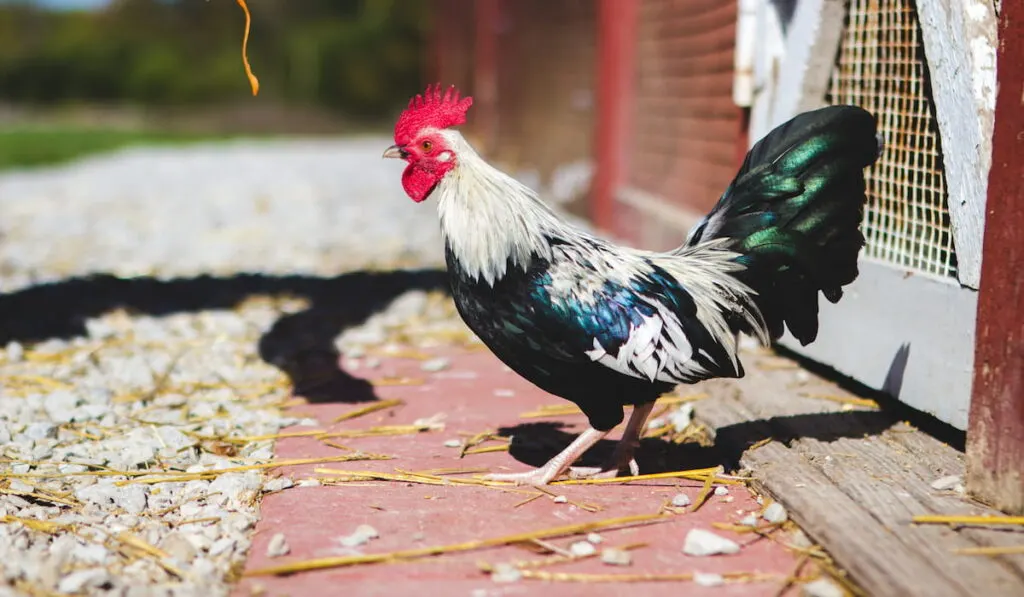
The older the chickens get, the easier it will be to determine their sex from their tail feathers. If you see a chicken with a long curved tail feather that looks like a sickle, it’s definitely a rooster.
No Eggs
An easy way to tell a rooster from a hen is if your chicken isn’t laying any eggs!
Once your chickens reach the age where they should be producing eggs, sometimes owners discover they have roosters among their hens.
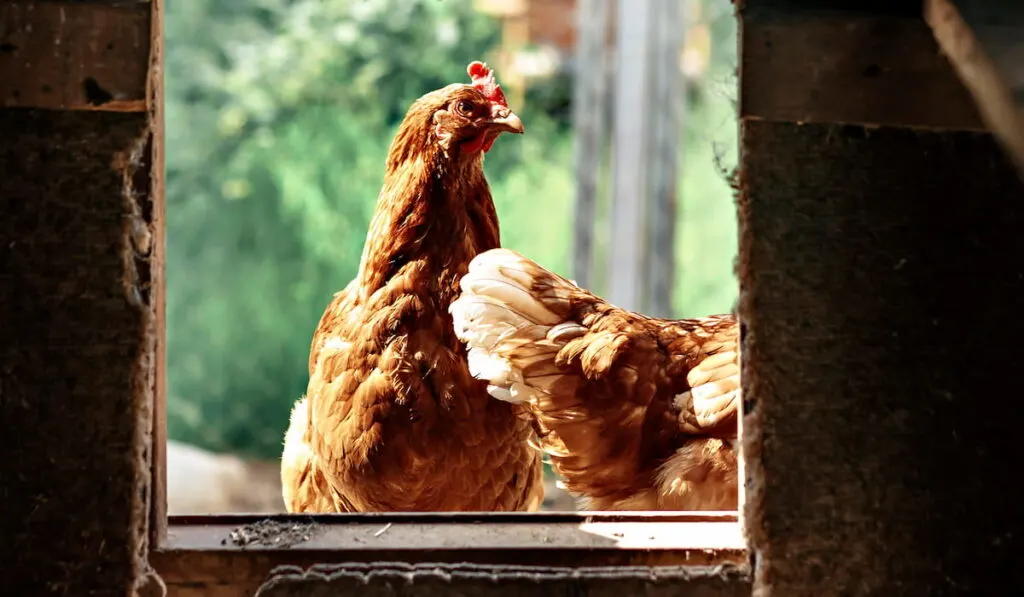
While it’s true that some hens start laying before others, they should all start laying eggs around the same time. If one is taking way longer, it could be a rooster!
Hackle Feathers
Roosters have what are called hackle feathers around their necks. It’s sort of like a lion’s mane.
An average rooster will have rich red or orange hackle feathers flowing down its neck and shoulders.
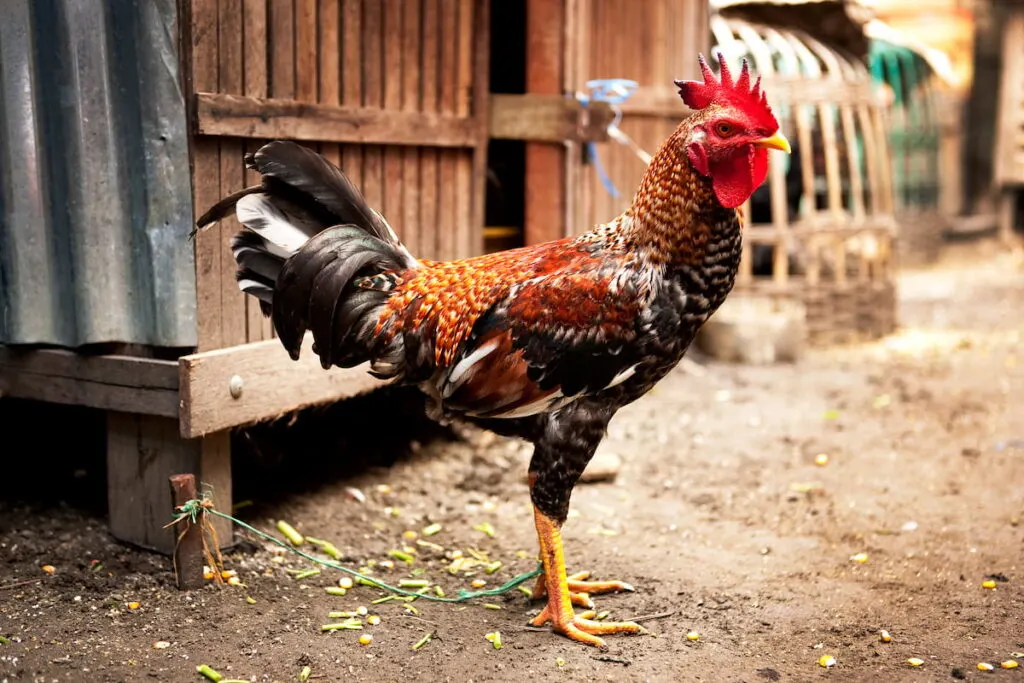
Hens, in contrast, have shorter feathers that make their necks appear much smaller than a rooster’s.
Again, this is the most obvious in mature chickens. Younger birds won’t have developed hackle feathers yet.
Different Saddle Feathers
Saddle feathers are located on the front of the tail.
Roosters and hens both have saddle feathers, but a rooster’s saddle feathers are longer, more colorful, and sharper. They almost look like pointy orange icicles.
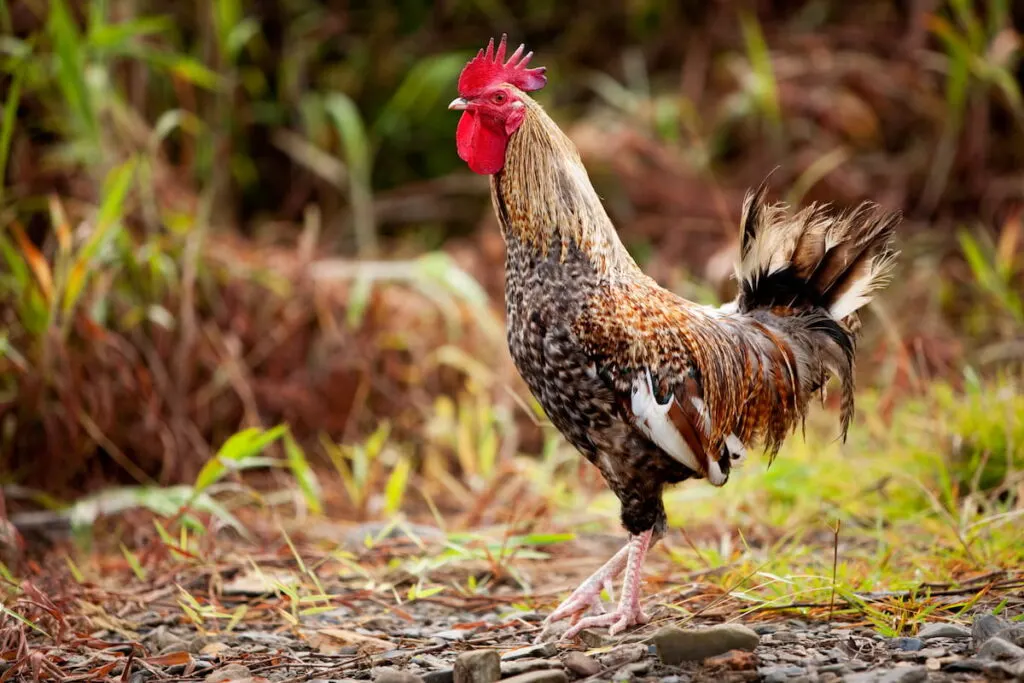
Hens, on the other hand, have duller and shorter saddle feathers. They’re also more rounded at the tips. You can usually tell sex differences via saddle feathers at around three months old.
Behavioral Differences
When chickens become adults, roosters will act much differently than hens. If you can’t discern sex from physical signs, watch to see how they walk around and interact with other birds.
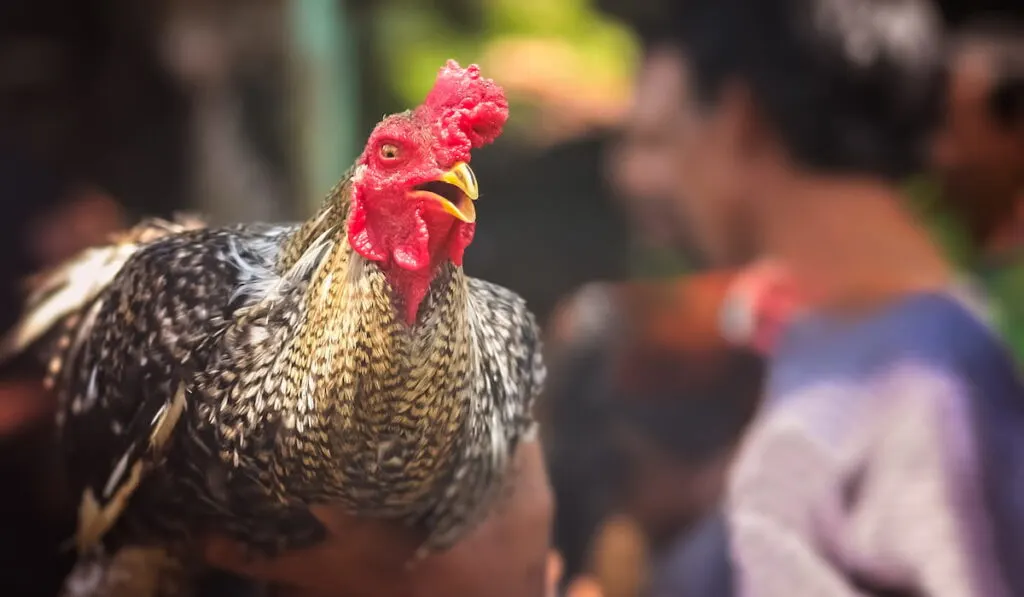
Roosters will typically be more aggressive. They’ll stand at the front of a group of birds with the hens behind them.
A rooster will be the first to investigate any strangers in the area or curious findings on the ground in the yard.
They’ll flap their wings more often and crow, which is an obvious sign you’ve got a rooster in your flock.
Final Thoughts
Knowing how to tell the difference between a hen and a rooster as early as possible will save you a lot of trouble.
You can skip any problems with neighbors, and hens are generally easier to manage because they get along better with the other hens.
Hens will also interact with your young kids more gently and give you plenty of delicious eggs!
